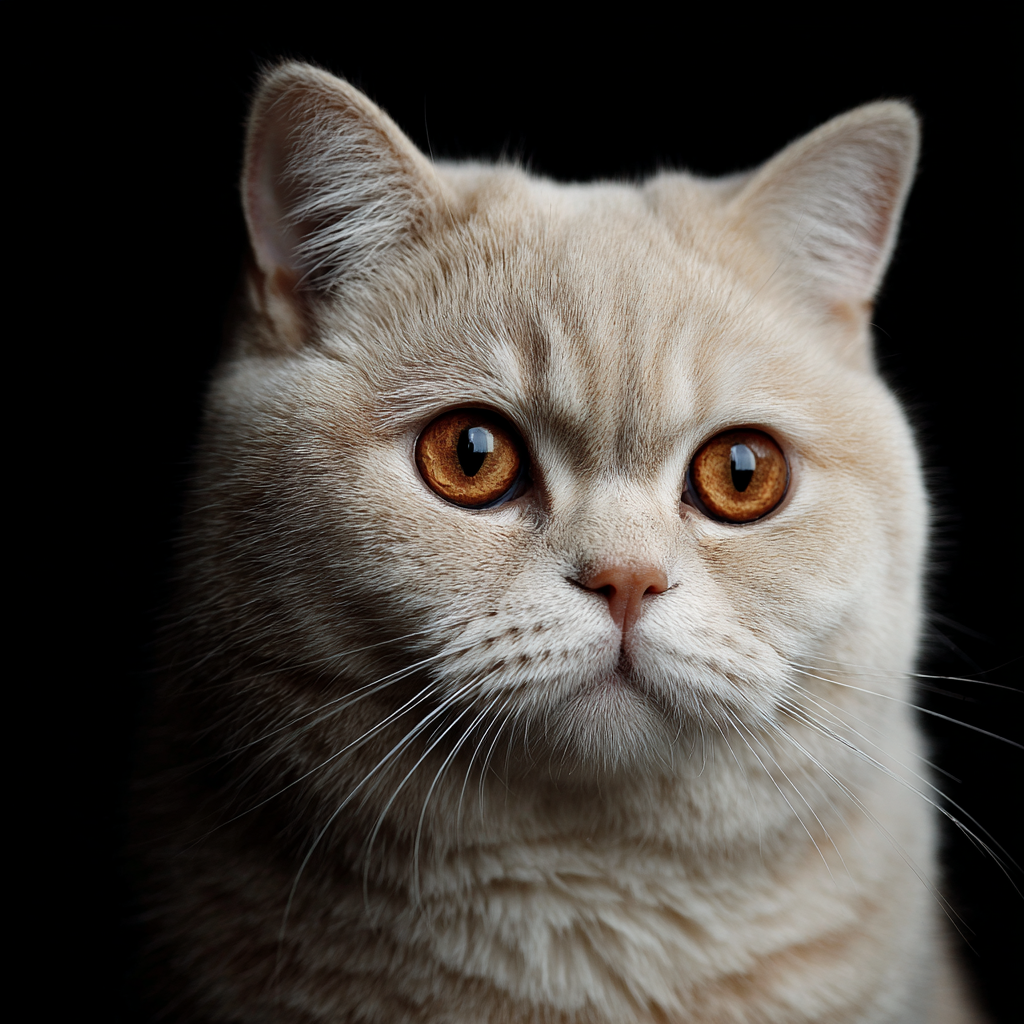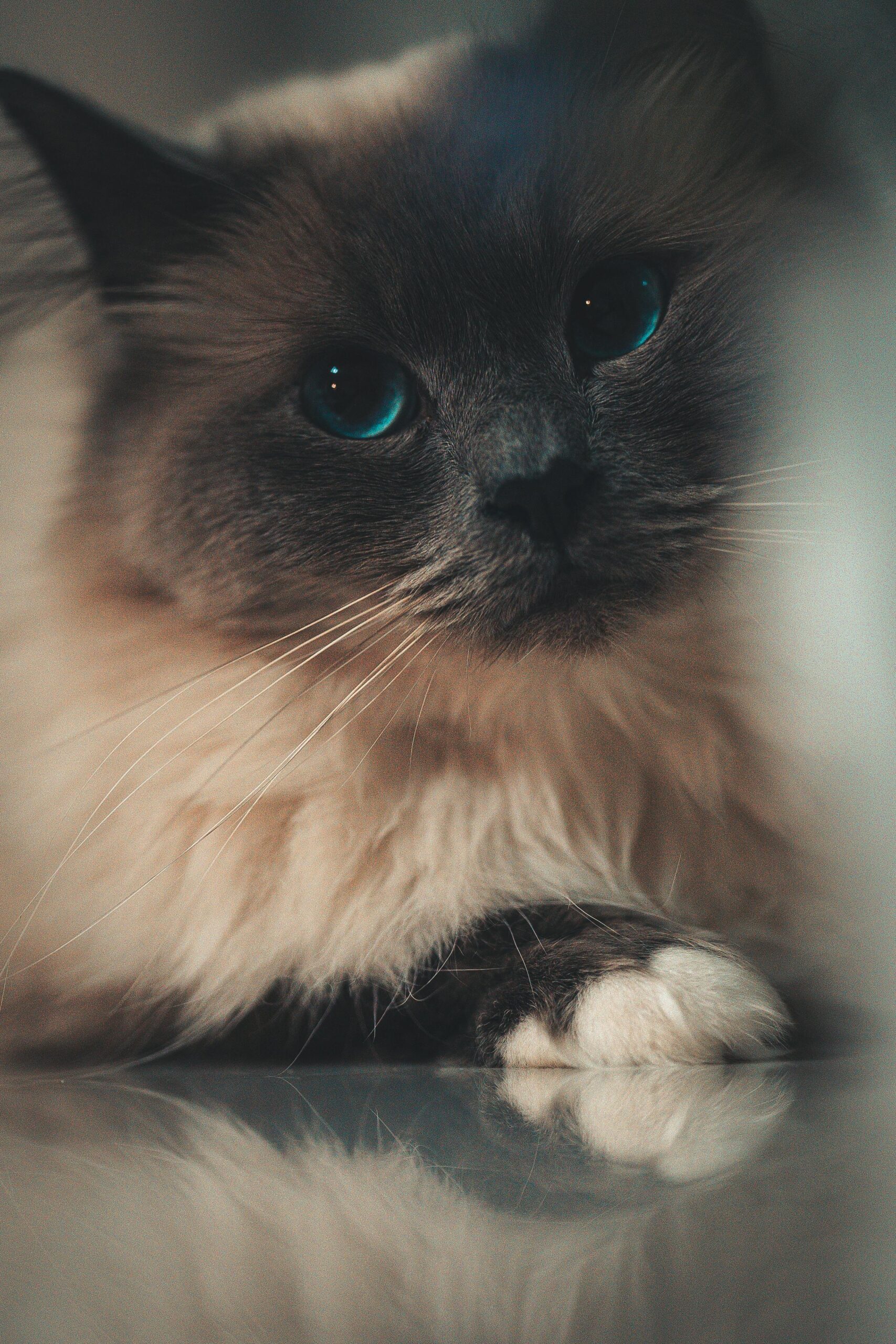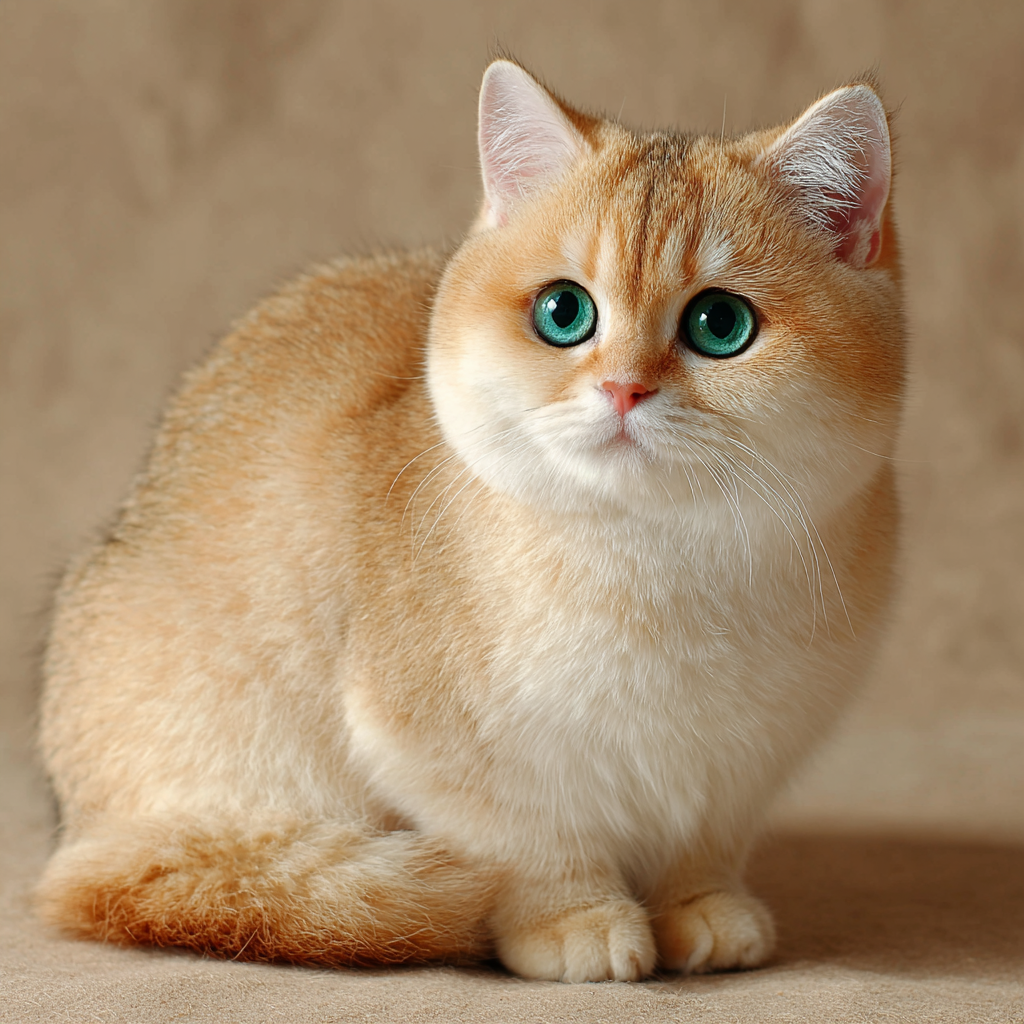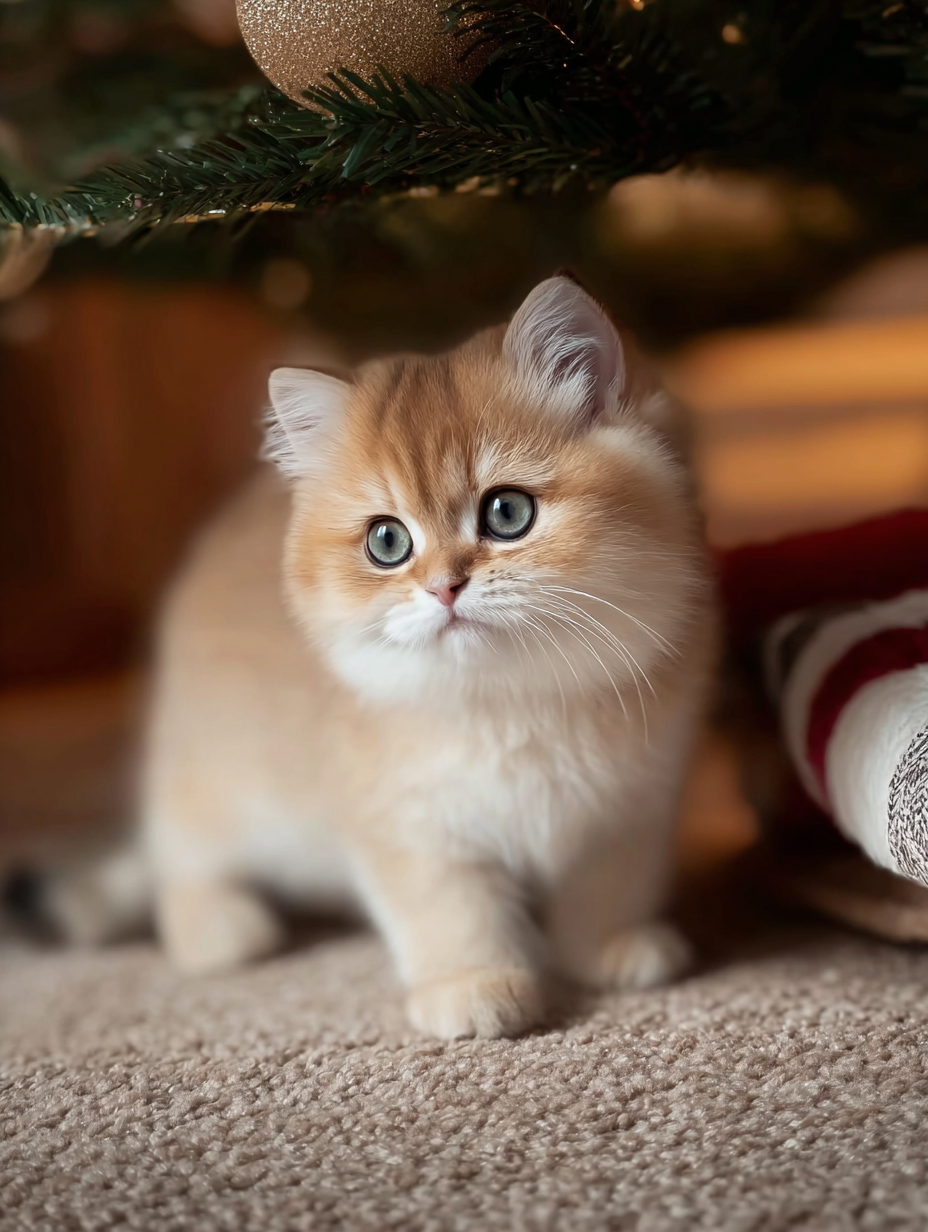
British Shorthair vs Ragdoll Cats: The Ultimate Guide for Families Choosing Between Two Amazing Breeds
The British Shorthair and the Ragdoll are two of the most well-loved, family-friendly cat breeds in the United States. Both are calm. Both are stable. And both are excellent indoor companions. These complimentary cat breeds have strong reputations for their gentle temperaments and easy adaptability.
But they are not the same type of cat.
A British Shorthair offers quiet presence, a teddy-bear look, and the kind of predictable temperament that fits beautifully into calm, structured homes. A Ragdoll, on the other hand, is hands-on, people-oriented, affectionate, and famously “floppy,” making them one of the best choices for families who want daily snuggles and love a cat that follows them everywhere.
This is what we will go over:
- temperament differences
- grooming requirements
- activity levels
- structure and body type
- health and longevity
- cost and availability
- daily lifestyle fit
- which breed is right for your home
👉 See Our Available British Shorthair and Ragdoll Kittens
Raised in-home with full health testing and careful socialization.
Overview: How British Shorthairs and Ragdolls Compare
Before diving into the deeper comparisons, here is the overview your looking for.
Side-by-Side Breed Snapshot
| Category | British Shorthair | Ragdoll |
|---|---|---|
| Temperament | Calm, quiet, independent | Affectionate, social, cuddly |
| Energy Level | Low | Low–moderate |
| Affection Level | Moderate | Very high |
| Kid-Friendly | Yes | Yes |
| Dog-Friendly | Yes, with calm dogs | Yes, very |
| Grooming Needs | Low | Medium |
| Size | Medium–large | Large–very large |
| Eyes | Gold, copper, green, blue-green | Blue |
| Coat Type | Plush short coat | Silky semi-long |
| Snuggle Level | Moderate | Very high |
| Ideal Home | Quiet, routine-based homes | Homes wanting daily cuddles & interaction |
The British Shorthair is the steady, easygoing, low-maintenance choice.
The Ragdoll is the warm, floppy, hands-on companion.
Both are excellent — and many families end up wanting one of each.
2. Temperament Differences (The Most Important Factor for Families)
Temperament is the biggest deciding factor between these two breeds. While they share some traits — gentleness, patience, predictable temperament — their affectionate style is totally different.
British Shorthair Temperament: Calm, Steady, and Quiet
British Shorthairs are peaceful cats that bring presence into the home without demanding constant interaction. They like being near you, not on you.
A British Shorthair typically:
- sits next to you instead of on your lap
- follows your routine and respects your space
- enjoys independent relaxation
- appreciates gentle affection on their own terms
- is polite in temperament
- adapts easily to stable homes
- is very tolerant of children who understand boundaries
British Shorthairs give companionship without chaos. They are ideal if you want a cat that blends into your life with very little maintenance.
✔ Best Homes for a British Shorthair
- busy professionals
- quiet homes
- structured households
- families wanting a low-demand companion
- people who appreciate calm, neat, predictable pets
Ragdoll Temperament: Social, Affectionate, and Unapologetically Snuggly
Ragdolls are the opposite energy — warm, loving, and attached. Families wanting a “velcro cat” or “emotional support cat energy” almost always choose a Ragdoll.
A Ragdoll typically:
- wants to be held
- follows you from room to room
- flops over for belly rubs
- sits on your lap during movies
- sleeps next to you
- greets you at the door
- actively seeks human connection
- loves gentle interaction
They bond deeply and often prefer to be wherever the family is. They are social, affectionate, and genuinely enjoy human closeness.
✔ Best Homes for a Ragdoll
- families who want daily snuggles
- homes with children
- people who work from home
- households wanting a cat that feels “dog-like”
- people who want a companion animal, not just a pet
⭐ Important Buyer Note
If snuggling, carrying, and physical closeness matter — choose a Ragdoll.
If calm presence and lower maintenance matter — choose a British Shorthair.
Both are excellent. They simply love in different ways.
👉 See Our Available British Shorthair and Ragdoll Kittens
Raised in-home with full health testing and careful socialization.
3. How Each Breed Fits Into Family Life
Most families considering either breed want a safe, stable companion that’s good with children, visitors, and routine changes. Both breeds excel here — but for different reasons.
British Shorthair in Family Homes
British Shorthairs are tolerant, patient cats that handle normal household activity very well. They enjoy being around family without being overstimulated.
British Shorthairs are great for:
- respectful children
- calm dogs
- multi-pet households
- quiet routines
- predictable schedules
They do not like rough handling or constant surprises, but they adapt quickly to well-managed homes.
Ragdoll in Family Homes
Ragdolls are famous for being one of the best cat breeds for families with children. Their gentle nature, relaxed body language, and desire to be part of family activities make them exceptional family cats.
Ragdolls are great for:
- children
- friendly dogs
- active families
- people wanting a companion who interacts
- households that enjoy closeness
They tolerate being picked up, carried, kissed, hugged (gently), and integrated into daily life far more than most cat breeds.
4. Behavior Differences: Independence vs. Attachment
Buyers often ask:
“Which breed will follow me around more?”
Answer: Ragdoll.
“Which breed is more independent?”
Answer: British Shorthair.
Here’s the deeper breakdown.
✔ British Shorthair Behavior
British Shorthairs behave like calm, grounded companions. They enjoy structure and stay content doing their own thing for part of the day.
They are:
- observant
- relaxed
- dignified
- independent but loyal
- predictable in routines
Both cat breeds love their owners, and are only mildly obnoxious about it.
✔ Ragdoll Behavior
Ragdolls behave like soft, friendly shadows. They love being involved and show affection through constant presence.
They are:
- outgoing
- floppy and relaxed
- emotionally expressive
- people-driven
- gently playful
Ragdolls rarely hide and prefer staying close to their family at all times.
👉 Apply for a Luxury British Shorthair or Ragdoll Kitten
We raise limited litters each year for families who value quality.
5. Coat & Grooming Requirements
Coat type is one of the biggest differences between British Shorthairs and Ragdolls, and it strongly influences daily care, allergens, shedding, and long-term grooming habits. Both breeds have beautiful coats, but they behave completely differently and require different maintenance routines in the home.
British Shorthair Coat: Plush, Dense, and Low Maintenance
The British Shorthair’s coat is one of the easiest to maintain in the cat world. Their fur is short, thick, and plush, with a crisp texture that naturally resists matting. This double coat evolved for durability, which makes everyday grooming minimal for modern families.
Key Coat Characteristics
- Dense double coat that feels plush like velvet
- Naturally repels dirt and debris
- Rarely mats or tangles
- Sheds in predictable cycles
- Maintains its structure with minimal grooming
- Ideal for owners wanting low upkeep
British Shorthairs require only weekly brushing to remove loose fur and support coat health. Even during seasonal shedding, brushing two or three times per week is usually enough. They keep themselves clean and have very little natural odor, making them easy to maintain even in small spaces or minimalist homes.
British Shorthairs do extremely well for families, professionals, first-time cat owners, and anyone who prefers a tidy cat with minimal shedding and very little coat management.
Ragdoll Coat: Silky, Soft, and Moderate Maintenance
The Ragdoll’s semi-long coat is one of the breed’s defining features — luxurious, soft, and flowing. Unlike the British Shorthair’s dense double coat, the Ragdoll coat is fine and silky with very little undercoat, which helps prevent matting but still requires regular attention.
Key Coat Characteristics
- Semi-long, silky hair that drapes over the body
- No heavy undercoat, which reduces extreme matting
- Requires brushing two to three times weekly
- Easily attracts loose hair during seasonal shedding
- Naturally soft texture that benefits from routine care
- Stunning in photos and videos due to length and texture
Ragdolls do much better with consistent brushing, especially behind the ears, under the arms, and along the hind legs. Many Ragdolls enjoy grooming as a bonding activity, which makes coat care easier for families.
Ragdolls are ideal for homes that love hands-on bonding, gentle grooming routines, and a cat with a visually striking, photo-friendly coat.
Which Coat Is Easier for Families?
If you want:
✔ Very low grooming → British Shorthair
✔ Enjoy brushing or want a fluffier cat → Ragdoll
⭐ CTA (coat-focused readers)
👉 See Our Available British Shorthair and Ragdoll Kittens
Raised in-home with full health testing and careful socialization.
6. Shedding Differences: What Families Should Expect
Shedding is a major deciding factor for many families. Both breeds shed, but not in equal ways or with equal intensity.
British Shorthair Shedding Patterns
British Shorthairs shed primarily during spring and fall, when they blow their seasonal coat. Outside of these periods, shedding is moderate and easy to manage with weekly brushing. Because their hair is short and dense, loose fur is less noticeable around the home.
Shedding Summary
- Seasonal shedding twice per year
- Low to moderate shedding the rest of the year
- Minimal hair on clothing compared to longhaired breeds
- Easy cleanup and low daily upkeep
British Shorthairs are a top choice for families who want less hair around furniture and clothing.
Ragdoll Shedding Patterns
Ragdolls shed year-round, especially during seasonal changes. Their longer fur is more visible in the home, and regular brushing keeps the coat healthy and prevents tangles.
Shedding Summary
- Consistent, year-round shedding
- Heavier shedding in spring and fall
- Longer fur means more visible shed
- Brushing helps control coat turnover
Ragdolls look stunning and luxurious, but owners must be willing to manage the extra coat.
Which Breed Sheds More?
Ragdoll sheds more due to coat length.
British Shorthair sheds less and is easier to maintain.
7. Size, Structure, and Body Type
Both breeds have unique and instantly recognizable silhouettes.
British Shorthair Structure: Compact, Strong, and Rounded
British Shorthairs have a powerful, muscular build with a classic teddy-bear appearance. Their dense body and round features make them look solid and substantial.
Key Structural Traits
- Round head with full cheeks
- Wide-set, expressive eyes
- Muscular, compact body
- Thick tail with rounded tip
- Medium-to-large build
- Weighty, dense feel when lifted
- Balanced proportions and strong bone
British Shorthairs look like plush, rounded companions — sturdy but elegant.
Ragdoll Structure: Long, Flowing, and Soft
Ragdolls are one of the largest domestic cat breeds. They have long bodies, large paws, and a relaxed muscular structure that makes them soft and flexible when held.
Key Structural Traits
- Large, oval blue eyes
- Long, soft body and neck
- Large paws and sturdy bones
- Silky coat that elongates their outline
- Medium-to-large build (often larger than British Shorthairs)
- Relaxed, floppy posture
Ragdolls appear elegant and flowing, with an instantly recognizable presence.
Which Looks Bigger?
- Ragdolls look larger because of their length and coat.
- British Shorthairs feel heavier due to muscle density.
Both are impressive in stature, but they express size differently.
8. Activity Level & Play Behavior
Both breeds are known for being calm, but they express their energy in different ways.
British Shorthair Activity: Slow, Steady, and Predictable
British Shorthairs prefer controlled play and short bursts of activity. They do not require high stimulation and are rarely hyperactive.
Activity Style
- Gentle, easy play sessions
- Enjoy puzzle feeders and quiet enrichment
- Prefer ground-level exploration
- Rarely jump or climb
- Low-maintenance for busy households
British Shorthairs are the ideal cat for families who enjoy a calm household with minimal fuss.
Ragdoll Activity: Social, Gentle, and Interactive
Ragdolls are also calm but far more people-driven. They participate in family activities and enjoy playful interaction.
Activity Style
- Fetch, wand toys, and soft play
- Follow their owners from room to room
- Curious about household happenings
- Play well with children
- Easygoing but more engaged than British Shorthairs
Ragdolls bring joy, social presence, and daily interaction to the home.
9. Health & Genetic Considerations
Ethical breeding makes a huge difference in long-term health for both breeds.
British Shorthair Health
British Shorthairs are very healthy when bred responsibly. Ethical breeders screen for:
- HCM (Hypertrophic Cardiomyopathy)
- PKD (Polycystic Kidney Disease)
- Heart ultrasounds
- Kidney ultrasounds
- Full DNA panel
Lifespan
12–15+ years, often longer with indoor living and good nutrition.
British Shorthairs are one of the most robust and predictable breeds when bred properly.
Ragdoll Health
Ragdolls are sturdy cats but require more specific genetic testing to maintain heart health.
Ethical Ragdoll breeders screen for:
- HCM — very important in this breed
- PKD
- FeLV/FIV negative lines
- DNA panels
- Regular cardiac evaluations
Lifespan
12–15 years, and many live longer with proper care.
Ragdolls are healthy but depend heavily on responsible breeding programs.
⭐ Luxury CTA for Health-Conscious Families
👉 Apply for a Luxury British Shorthair or Ragdoll Kitten
We raise limited litters each year for families who value quality.
10. Cost Differences & Availability
Prices vary depending on breeder quality, health testing, and rarity of color.
British Shorthair Costs
Typical price range in the U.S.:
- $2,500–$4,500 for pet kittens
- Higher for rare colors such as golden, lilac, black, or cinnamon
British Shorthairs have strong demand, especially warm colors (golden, cream, cinnamon).
Ragdoll Costs
Typical price range in the U.S.:
- $3,000–$4,500 for pet kittens
- Higher for bicolor, mitted, or rare colors like lilac
Ragdolls remain one of the most popular breeds in the world, consistently ranking high in demand.
Which Is More Available?
- Both breeds sell out quickly from ethical breeders.
- Most buyers reserve ahead of time.
- Warm-tone British Shorthairs + bicolor Ragdolls sell the fastest.
11. Which Breed Fits Your Lifestyle Best?
Choosing between a British Shorthair and a Ragdoll is not about which cat is “better” — it’s about which cat matches your household, energy level, and daily routine.
Both breeds are exceptional. But they shine in different types of homes.
This section helps families make the most informed decision possible.
British Shorthair Lifestyle Fit
British Shorthairs thrive in calm, structured homes where affection is shared without constant handling. They are gentle, polite, and highly adaptable when the environment is stable.
Best for:
- Working professionals
- Quiet, minimalist households
- Homes with older children
- Families who prefer low-maintenance routines
- People who want presence without clinginess
- First-time cat owners who want predictable temperament
- Multi-pet homes with calm animals
Why they fit these homes:
British Shorthairs enjoy companionship but not constant cuddling. They like being near their people without needing to be on them. Their independence makes them a good match for busy schedules, and their grooming needs are minimal.
Daily Life With a British Shorthair
- They spend much of the day lounging or observing
- They follow you quietly from room to room
- They appreciate gentle affection on their terms
- They do not startle easily
- They settle into routines quickly
A British Shorthair feels like having a classy, gentle roommate who genuinely enjoys your company.
Ragdoll Lifestyle Fit
Ragdolls thrive in engaging, affectionate homes where interaction is frequent. They are social, cuddly, and extremely people-oriented — ideal for families wanting a snuggly companion.
Best for:
- Families with children
- Stay-at-home parents
- Work-from-home buyers
- People wanting an emotional support-type cat
- Homes with other friendly pets
- Families who want daily snuggles and contact
- People who love being followed around
Why they fit these homes:
Ragdolls crave connection and want to take part in everyday life. They relax into your arms, greet you at the door, and stay close throughout the day. Their calm, floppy nature makes them ideal for gentle interaction.
Daily Life With a Ragdoll
- They shadow you around the house
- They choose to sleep on or very near their humans
- They love lap time, couch time, bedtime snuggles
- They enjoy active play with kids
- They are gentle when handled properly
A Ragdoll feels like having a soft, gentle companion who wants to be part of every moment.
12. Family Compatibility: Children, Dogs, and Multi-Pet Homes
Both breeds are known for being safe and predictable in family environments, but their styles differ.
British Shorthairs With Children
British Shorthairs do well with older, calm children who understand gentle interaction. They are patient but prefer boundaries.
Strengths:
- Calm and tolerant
- Prefer gentle touch
- Rarely reactive or aggressive
- Easy to read — clear body language
Considerations:
- Not ideal for toddlers who grab or squeeze
- Prefer sitting next to kids, not being held by them
British Shorthairs work beautifully in respectful households where kids understand how to handle cats.
Ragdolls With Children
Ragdolls are one of the best family cats ever developed. Their gentle, floppy nature makes them extremely kid-friendly when handled correctly.
Strengths:
- Tolerant of handling
- Enjoy being held
- Very social around children
- Rarely hide or startle
- Naturally affectionate
Considerations:
- Children must learn proper holding technique to support body weight
- Their soft coat requires a bit more upkeep
If a family wants a loving, interactive pet for kids → choose a Ragdoll.
British Shorthairs With Dogs
British Shorthairs adapt well to polite, calm dogs. They appreciate dogs that respect their space and allow slow introductions.
Result:
Calm, peaceful coexistence.
Ragdolls With Dogs
Ragdolls typically do exceptionally well with dogs, especially gentle or playful breeds. They bond easily with canine companions and may even follow them around the home.
Result:
Friendly, social, integrated multi-species relationships.
13. Mistakes Buyers Commonly Make (and How to Avoid Them)
Many families love both breeds, but common misunderstandings can lead to mismatched expectations. To protect buyers — and your reputation as a breeder — this section clarifies potential pitfalls.
Mistake #1: Confusing Calm With Cuddly
Some buyers assume a calm cat = a snuggly cat.
This is untrue.
Truth:
- British Shorthair = calm
- Ragdoll = cuddly
British Shorthairs enjoy affection but not constant contact.
Ragdolls actively seek physical closeness.
Mistake #2: Choosing Based on Appearance Alone
Both breeds are gorgeous, but looks should never override temperament fit.
Guide:
- Choose British Shorthair for easy care + independence
- Choose Ragdoll for affection + interaction
Focus on how the breed fits your daily lifestyle.
Mistake #3: Underestimating Grooming Needs
Ragdolls require moderate brushing.
British Shorthairs require minimal brushing.
Families wanting low-maintenance grooming should choose the British Shorthair.
Mistake #4: Expecting a British Shorthair to Act Like a Ragdoll
A British Shorthair will not seek constant cuddles.
They are affectionate — but dignified.
Mistake #5: Buying From Unethical Breeders
Both breeds are heavily counterfeited online.
Low-cost “Ragdoll” or “British Shorthair” kittens are very often:
- unregistered
- unhealthy
- improperly socialized
- misidentified colors or breeds
- imported without testing
- bred in poor conditions
Always choose a breeder who:
- health tests parents
- provides registration
- raises kittens in-home
- offers transparent communication
- has consistent reviews and documentation
This is why your program stands out — you provide complete transparency, full health testing, and structured early development.
14. People Also Ask
Are British Shorthairs more independent than Ragdolls?
Yes. British Shorthairs are naturally more independent and enjoy spending part of their day relaxing alone. They still bond strongly with their families, but they do not need constant interaction. Ragdolls prefer to be physically close, follow their owners, and take part in daily activities.
Which breed is better for cuddling — British Shorthair or Ragdoll?
Ragdolls are far better for cuddling. They are floppy, affectionate, and enjoy being held. British Shorthairs like gentle affection but rarely enjoy long snuggle sessions or being carried.
Which breed is calmer — British Shorthair or Ragdoll?
Both breeds are calm, but British Shorthairs are more reserved and composed. Ragdolls are calm but more socially engaged.
Are British Shorthairs or Ragdolls better for apartments?
Both breeds adapt well to apartment living. British Shorthairs do well in quiet, structured spaces, while Ragdolls do well in social apartments with people home often.
Are British Shorthairs good with busy owners?
Yes. Their independent, low-maintenance nature makes them ideal for families who work long hours.
Are Ragdolls good for emotional support?
Yes. Ragdolls bond deeply and are often chosen as emotional support or therapy-style cats due to their gentle nature and physical closeness.
Do British Shorthairs or Ragdolls live longer?
Both have similar lifespans of 12–15+ years, depending on genetics, environment, and diet.
Which breed is easier for first-time cat owners?
British Shorthair is the easiest due to low grooming, calm temperament, and predictable routine needs. Ragdolls are beginner-friendly if owners are willing to commit to grooming and physical closeness.
Which breed is healthier overall?
Both are healthy when responsibly bred. British Shorthairs tend to be slightly more robust due to their structure, but Ragdolls are also very healthy with proper genetic screening.
At Almonte Cats, we raise British Shorthairs and Ragdolls for families who value beauty, temperament, and trust. Every kitten carries our promise of health, love, and lifelong support.
Related Colors and Patterns
- Russian Blue vs British Shorthair
- Orange British Shorthair
- British Shorthair Kitten Colors Near Me
- Intro to All British Shorthair Colors
- How Much Does A Cinnamon Ragdoll Cost?
Sources & References
- The International Cat Association (TICA). British Shorthair Standard
https://tica.org/breeds/browse-all-breeds?view=article&id=859 - Cat Fanciers’ Association (CFA). “British Cat Breed Profile.”
https://cfa.org/ragdoll/ - Messybeast Cat Genetics. “Color Genetics in Cats – British Shorthair
https://www.messybeast.com/genetics.htm - 10 Things to Know About Ragdolls
- The Spruce Pets. “British Shorthair: Breed Facts and Care Tips.”
https://www.thesprucepets.com/ragdoll-cat-breed-profile-554021 - Almonte Cats. British Shorthair Cat Program
https://almontecats.com




Read the Comments +